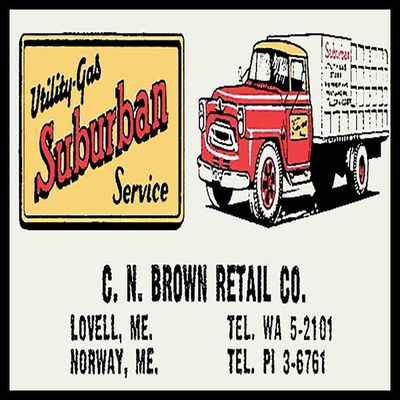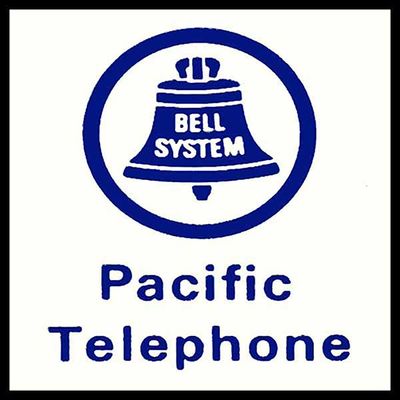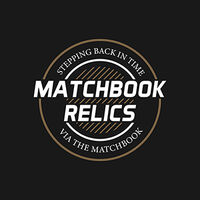Sparking Awareness: How the Utility Industry Made Use of Matchbooks to Promote Their Services
In the mid-20th century, matchbooks were more than just practical items for lighting cigarettes or stoves—they were powerful advertising tools used by a wide range of industries to connect with their audiences. Among these, the utility industry, including electricity, gas, water, and telecommunications companies, found matchbooks to be an effective medium to promote their services. This article explores how the utility industry ingeniously utilized matchbooks to enhance brand visibility, educate customers, and build community trust.
The Practical Appeal of Matchbooks
Matchbooks were ubiquitous and practical items found in nearly every household and business. Their widespread use made them an ideal advertising medium, as they provided a constant presence in the daily lives of potential customers. For utility companies, matchbooks offered a unique opportunity to reach households directly, reinforcing brand awareness and promoting their services whenever a match was struck.
Captivating Designs and Messaging
Utility companies leveraged the compact space of matchbook covers to create visually appealing and memorable advertisements. These matchbooks often featured the company’s logo, bold colors, and striking images related to their services. Slogans like "Powering Your Future" or "Keeping You Connected" were crafted to convey the reliability and essential nature of their services.
By incorporating these elements, utility companies ensured that their matchbooks stood out and left a lasting impression on potential customers. The bold and attractive designs not only caught the eye but also conveyed the company’s commitment to service and reliability.
Educating Customers
Matchbooks served as a concise platform to educate customers about the utility company’s services, safety tips, and energy-saving practices. Inside the matchbooks, companies included brief descriptions of their offerings, such as electricity supply, gas distribution, water treatment, and telecommunications. They also provided safety tips, like how to handle gas leaks or electrical outages, and energy-saving advice to help customers reduce their utility bills.
By providing practical information and educating customers, utility companies could build trust and credibility. This approach encouraged customers to rely on their services and adopt safer and more efficient practices in their daily lives.
Special Offers and Promotions
Utility companies used matchbooks to advertise special offers, discounts, and promotions to attract new customers and retain existing ones. Inside the matchbooks, customers could find coupons for reduced rates, special deals for new connections, or loyalty programs for long-term customers. These incentives provided immediate value, encouraging potential customers to engage with the company’s services.
By including these promotions, utility companies made their matchbooks more than just advertising tools—they became valuable resources for customers looking to save money on their utility services.
Building Community Trust and Engagement
Matchbooks were also used to foster community trust and engagement. Utility companies distributed matchbooks at community events, service centers, and through local businesses, ensuring they reached a wide audience of potential and current customers. By providing matchbooks as complimentary items, companies ensured their brand stayed in the hands and minds of customers, fostering familiarity and loyalty.
The practical use and frequent handling of matchbooks meant that customers were constantly reminded of the utility company and its services. This ongoing presence helped build a strong connection with customers, encouraging repeat engagement and positive word-of-mouth recommendations.
Strategic Distribution for Maximum Reach
The strategic distribution of matchbooks played a crucial role in their effectiveness as marketing tools. Utility companies ensured that matchbooks were available in high-traffic locations such as service stations, community centers, and local events. This widespread availability maximized their reach and ensured that their promotional messages were seen by a broad audience.
Additionally, matchbooks were often given out at industry events, trade shows, and other gatherings where they could reach a concentrated audience of potential customers and industry professionals. This targeted distribution helped companies connect with individuals who were already interested in their services, increasing the likelihood of conversion to long-term customers.
Commemorative Editions and Collectible Series
To enhance their appeal and create a sense of exclusivity, some utility companies produced commemorative editions and collectible series of matchbooks. These matchbooks featured special designs celebrating significant milestones, historical events, or innovative services. Collectors and enthusiasts prized these limited-edition matchbooks, adding a layer of prestige and desirability to the utility company’s brand.
By creating collectible matchbooks, utility companies were able to tap into the nostalgia and passion of their customers, further strengthening their brand’s image and appeal.
Conclusion
Utility companies skillfully utilized matchbooks as an effective marketing tool to promote their services and engage with customers. Through captivating designs, educational content, special offers, and strategic distribution, these companies were able to create strong brand identities, foster customer trust, and capture the public’s imagination. Today, vintage matchbooks from utility companies serve as cherished collectibles, offering a glimpse into the rich history of utility advertising and the innovative strategies that helped define an era.




